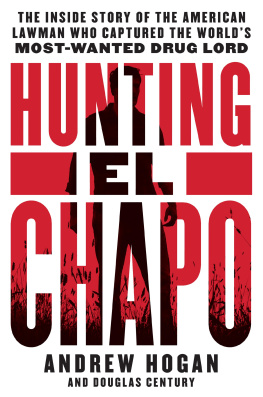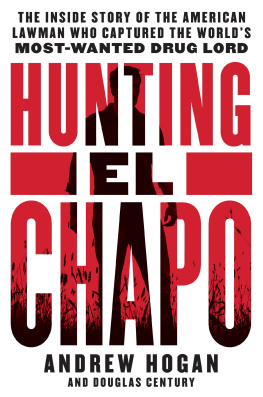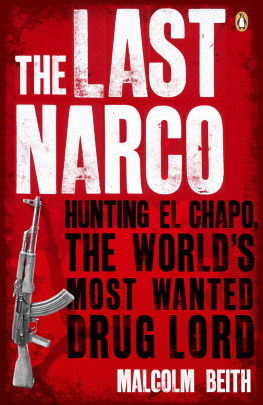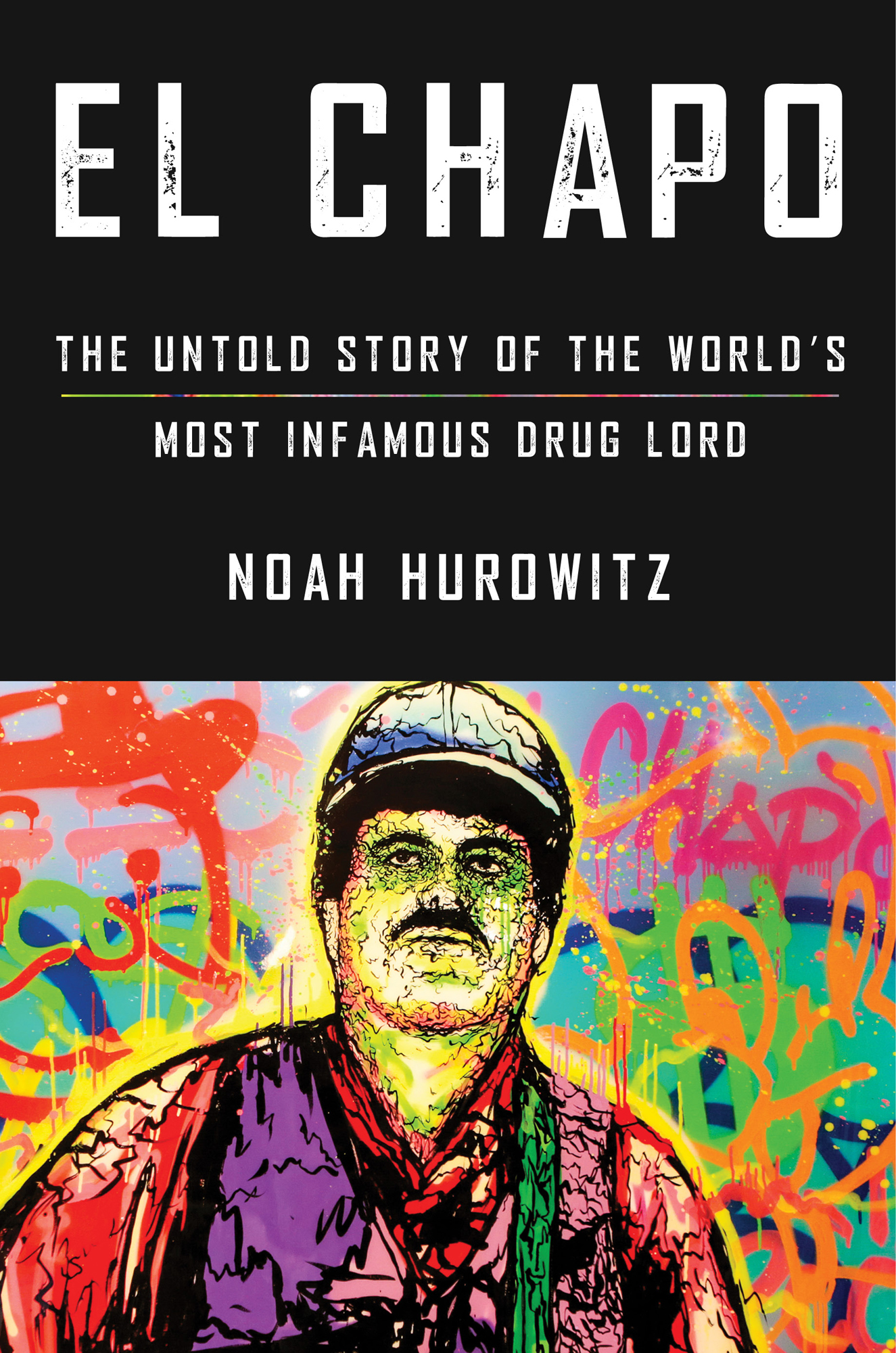Contents
Guide
El Chapo
The Untold Story of the Worlds Most Infamous Drug Lord
Noah Hurowitz

An Imprint of Simon & Schuster, Inc.
1230 Avenue of the Americas
New York, NY 10020
www.SimonandSchuster.com
Copyright 2021 by Noah Hurowitz
All rights reserved, including the right to reproduce this book or portions thereof in any form whatsoever. For information, address Atria Books Subsidiary Rights Department, 1230 Avenue of the Americas, New York, NY 10020.
First Atria Books hardcover edition July 2021
 and colophon are trademarks of Simon & Schuster, Inc.
and colophon are trademarks of Simon & Schuster, Inc.
For information about special discounts for bulk purchases, please contact Simon & Schuster Special Sales at 1-866-506-1949 or .
The Simon & Schuster Speakers Bureau can bring authors to your live event. For more information, or to book an event, contact the Simon & Schuster Speakers Bureau at 1-866-248-3049 or visit our website at www.simonspeakers.com.
Interior design by Dana Sloan
Map design by Stella Ioannidou
Jacket design by James Iacobelli
Jacket illustration Avery Andon/Art | Life, inspired by DOJ photograph of El Chapo
Author photograph Liam Quigley
Library of Congress Cataloging-in-Publication Data
ISBN 978-1-9821-3375-7
ISBN 978-1-9821-3377-1 (ebook)
This book is dedicated to all victims and survivors of the war on drugs, in the hope that they may find peace and justice.
INTRODUCTION
T HE SIERRA MADRE Occidental range sweeps down from the Rocky Mountains, across the Arizona border, and south through the states of Sonora, Chihuahua, Sinaloa, and Durango, forming the spine of northwestern Mexico. Little is known of the first inhabitants of the mountains, but thanks to archeological clues left behind in the form of pottery and subterranean pit houses, we can pick up the trail around 300 CE of scattered communities that grew into a society calling itself the Rarmuri, those with light feet, or foot runners. The Rarmuri, now known as Tarahumara, the Spanish corruption of their name, originally settled the plains to the east of the Sierra Madre, where they developed a culture of ritual endurance races, twenty-four-hour ultra-marathons run barefoot or in huarache sandals, a tradition that persists to this day. As Spanish missionaries first began arriving in the mountains in the 1500s, bringing with them misery and death in the form of smallpox and imperial cruelty, the Tarahumara rose up in successive revolts, moving deeper and deeper into the Sierra and bestowing upon the area a reputation as an untamable wilderness. But it wasnt enough to keep outsiders from coming in. Home to rich veins of silver, gold, copper, and other precious minerals, the mountains drew prospectors and mining companies for centuries, and many of the current inhabitants of the Sierra Madre can trace their presence in Sinaloa to ancestors who arrived as miners and never left. Now many of them make a living from the figurative gold mines of marijuana and opium. It is this, not mining, that has earned this region spanning portions of the states of Sinaloa, Chihuahua, and Durango a new name: the Golden Triangle.
The steep peaks and deep valleys were carved over millennia by rivers, which flow west to the ocean, tumbling down in torrents during the rainy season and in tricklesif at allduring the dry season. These waters irrigate the fertile lowland plains of Sinaloa, a long and narrow state against whose northern shores lap the waves of the Gulf of California, and whose southern beaches look out on the vast expanse of the Pacific. About an hour inland, the state capital of Culiacn sits nestled at the foot of the Sierra Madre mountains, which form a striking backdrop on the horizon.
Long a provincial backwater, Culiacn began to see a steady influx of people and money beginning in the 1940s, first as newly built dams made large-scale agriculture possible, and later as a few native Sinaloans began to take their talent for illegal import and export to a global scale. Culiacn now boasts a population of nearly a million people. The city is a magnet for people fleeing the countryside, and at its margins many of these newcomers live in ramshackle huts and often make a living picking through trash heaps. As you get closer to the center, dirt side streets and overgrown vegetation give way to a modern sprawl of glittering shopping malls, luxury sports cars, and late-model pickup trucks racing down broad thoroughfares, before turning into prim middle- and upper-class neighborhoods of two- and three-story homes, all signs of a place where people know how to spend money.
Culiacn is home to a professional baseball team, the Tomateros (named for one of Sinaloas most important legal cash crops), and a sprawling botanical garden, nearly twenty-five acres of architecturally designed walkways and palm groves resplendent with thousands of plant species; at the heart of the gardens sits one of artist James Turrells gorgeous skyspace sculptures, with an interior that changes color as the angle of the sun changes. At sunset, it glows an incandescent pink.
The city is vivisected by three rivers, the Humaya, the Tamazula, and the Culiacn, which meet just west of the downtown, allowing for a verdant malecn, or waterfront boardwalk, where families stroll in the shade and street musicians set up shop. At the center of it all stands a blindingly white, neoclassical cathedral overlooking the main plaza, a shady green oasis named for the revolutionary hero lvaro Obregn that serves as a focal point for the towns street life. On the weekends, it is common to find live bands playing in the plazas gazebo, while elderly couples dance in pairs.
About a kilometer away from downtown, perched on a wall of green glass tiles atop a long, low-slung shack with a corrugated metal roof, and wedged between a rail yard and a busy thruway, the mustachioed face of the bandit-saint Jess Malverde scowls down on the traffic funneling in and out of the city. Devotees come here to pay their respects and leave a small offering at the shrine in the hopes that the spirit of Malverde will bring them good fortune in business, rain in a drought, the safe return of lost or stolen property, or safe passage to the United States. Merchants peddle trinkets, votive candles, and rosaries with Malverdes image, a sign of the fusion of Catholic faith and reverence for the legendary thief who has gained a semi-sacred status as a protector of the poor and, most infamously, as the patron saint of drug traffickers.
The story goes that Jess Malverde entered the world as Jess Jurez Mazo around 1870, when Sinaloa and the rest of Mexico were under the thumb of the dictator Jos de la Cruz Porfirio Daz Mori. Born to a peasant family, Mazo grew up in poverty so severe that his parents starved to death. He swore revenge on the elite and took to the hills for a life dedicated to robbing rich landowners and passing out the loot to poor highlanders throughout the Sierra Madre. Among his wealthy victims, the acts of banditry earned him the nickname Malverde, meaning evil-green, supposedly due to an association between misfortune and the color green. But among the impoverished residents of the Sinaloa highlands, he gained a reputation as a Robin Hood figure at a time in which local and foreign investors were gobbling up low-lying, communal agricultural land to meet U.S. demand for sugarcane and other cash crops, while subsistence farmers in the mountains were losing land to wealthy ranchers.












 and colophon are trademarks of Simon & Schuster, Inc.
and colophon are trademarks of Simon & Schuster, Inc.
